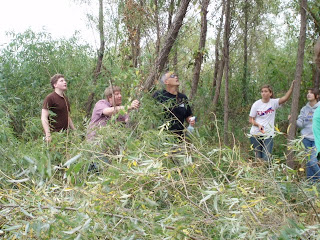The plant science students were able to continue the collaboration with Polk County Conservation by harvesting Virginia Wild Rye (Elymus virginicus) seed out at Chichaqua Bottoms Greenbelt. The students also helped remove some tree species.


By the fall, the first phase of the prairie reconstruction showcased the asters (Aster laevis, Aster novae-angliae), goldenrod (Solidago rigida), and early sunflower (Heliopsis helianthoides). Eleven species of forbs were seen to bloom by the end of its second year.









